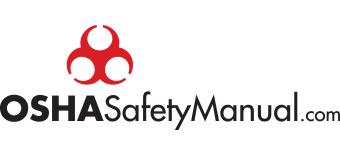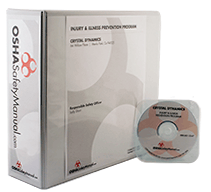
Sample Table of Contents
- Chapter 1 – Injury and Illness Prevention Program
- Chapter 2 – Code of Safe Work Practices
- Chapter 3 – Responsible Safety Officer
- Chapter 4 – Employee Health Services
- Chapter 5 – Biological Hazards
- Chapter 6 – Safety Training
- Chapter 7 – Drug and Alcohol Free Workplace
- Chapter 8 – Workplace Violence Prevention Plan
- Chapter 9 – Fire Safety
- Chapter 10 – Electrical Safety
- Chapter 11 – Chemical Safety
- Chapter 12 – Kitchen Safety
- Chapter 13 – Hazards Communications
- Chapter 14 – Emergencies
- Chapter 15 – Protective Equipment
- Chapter 16 – Noise
- Chapter 17 – Tools
- Chapter 18 – Ladders and Scaffolds
- Chapter 19 – Mechanical Guarding
- Chapter 20 – Materials Handling
- Chapter 21 – Building Management and Construction
- Chapter 22 – Concrete and Masonry Construction
- Chapter 23 – Roofing Operations and Equipment
- Chapter 24 – Fall Protection
- Chapter 25 – Scaffolds – General Requirements
- Chapter 26 – Suspended Scaffolds
- Chapter 27 – Safety Belts and Nets
- Chapter 28 – Standard Railings
- Chapter 29 – Tool Box Talks
- Chapter 30 – Environmental Safety
- Chapter 31 – Off-Site Safety
- Chapter 32 – Confined Spaces
- Chapter 33 – Confined Space Operations – Permit Required
- Chapter 34 – Hazard Signs / Warnings
- Chapter 35 – Traffic and Transportation
- Chapter 36 – Motor Vehicle Operations
- Chapter 37 – Vehicle Maintenance
- Chapter 38 – Barricades & Access Control
- Chapter 39 – Excavations & Trenching
- Chapter 40 – Compaction Equipment
- Chapter 41 – Rock Crushing and Drilling
- Chapter 42 – Electrical Lockout/Tagout
- Chapter 43 – Steel and Hot Metal Handling
- Chapter 44 – Steel Erection – Sub Part R
- Chapter 45 – Welding Safety Procedures
- Chapter 46 – Laser Safety
- Chapter 47 – Gases
- Chapter 48 – Pressure Safety
- Chapter 49 – Spray Coating Operations
- Chapter 50 – Bin, Bunkers, Hoppers and Material Storage
- Chapter 51 – Demolition
- Chapter 52 – Blasting Operations
- Chapter 53 – Possession and Handling of Explosives
- Chapter 54 – Telecommunication Safety
- Chapter 55 – Ionizing Radiation
- Chapter 56 – Non-Ionizing Radiation.
- Chapter 57 – Ergonomics – Computers
- Chapter 58 – Ergonomics and Cumulative Trauma Disorders
- Chapter 59 – Proposition 65 Program
- Chapter 60 – Seismic Safety
- Chapter 61 – Grain Handling Facilities
- Chapter 62 – Logging
- Chapter 63 – Pulp Paper and Paperboard Mills
- Chapter 64 – Sawmills and Wood Working Operations
- Chapter 65 – Carcinogens
- Chapter 66 – Hazardous Spill Prevention Control and Countermeasure Program
- Chapter 67 – Emergency Plan for Hazardous Spills
- Chapter 68 – Process Safety Management Compliance
- Chapter 69 – Oil and Gas Wells
- Chapter 70 – Petroleum – Drilling and Production Safety
- Chapter 71 – Working Over or Near Water
- Chapter 72 – Automotive Repair & Service Stations
- Chapter 73 – Textiles
- Chapter 74 – Laundry and Dry Cleaning Equipment
- Chapter 75 – Sanitation
- Chapter 76 – Agriculture
- Chapter 77 – Pesticides & Herbicides
- Chapter 78 – Horse and Farm Safety
- Chapter 79 – Tuberculosis Exposure Control Plan
- Chapter 80 – Cryogenic Fluids
- Chapter 81 – Hydrogen Furnaces
- Chapter 82 – Diving Operations
- Chapter 83 – Helicopter Operations Safety
- Chapter 84 – Forms


